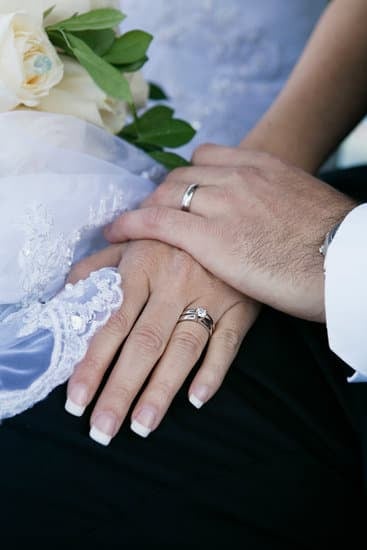Are you wondering how to address a family on wedding invitations? Understanding the etiquette and importance of properly addressing families on such an important occasion is crucial. From traditional addressing formats to handling special circumstances, this article will provide you with comprehensive guidance on navigating the complexities of family addressing for wedding invitations.
Delving into the traditional rules and etiquette around addressing families on wedding invitations, we will explore why it’s essential to get it right. Whether you are dealing with blended families, same-sex couples, or specific situations like divorced parents or widows, understanding the importance of proper addressing sets the tone for your wedding celebration.
In addition to discussing traditional addressing formats such as ‘Mr. and Mrs.’ versus using the family name, we will also cover how to include children on wedding invitations and consider cultural and personal preferences for family addressing. Furthermore, we will offer practical tips and examples for addressing wedding invitation envelopes, including common mistakes to avoid in order to ensure that your guests feel respected and included from the moment they receive your invitation.
Traditional Addressing Formats
When it comes to addressing families on wedding invitations, traditional etiquette plays a significant role in ensuring that the invitations are not only respectful but also considerate of each family’s structure. Understanding the importance of properly addressing a family on wedding invitations is crucial in setting the tone for the event and showing respect for the recipients.
There are different options for addressing families on wedding invitations, with two of the most commonly used formats being “Mr. and Mrs.” and using the family name. When using the traditional “Mr. and Mrs.” format, it’s essential to ensure that both spouses’ titles and full names are included. However, modern trends have seen an increase in using the family name as an inclusive and neutral way of addressing families on wedding invitations.
Here are some examples:
- Traditional Format: Mr. John Smith and Mrs. Emily Smith
- Family Name Format: The Smith Family
It’s important to remember that when formally addressing a family on wedding invitations, it’s essential to use proper etiquette while also considering what feels most appropriate for the specific couple and their families. Including both parents’ names or simply using the family name can be a thoughtful way to address families on wedding invitations while adhering to traditional rules or opting for more modern approaches as per their preferences and wishes.
Including Children
When it comes to addressing families with children on wedding invitations, there are a few proper etiquette guidelines to keep in mind. Ensuring that the entire family feels included and respected is essential when sending out these formal invitations.
Here are some ways to properly address families with kids on wedding invitations:
- Individual Children’s Names: If the children in the family are older, it may be appropriate to include their names on the invitation. For example, “Mr. and Mrs. Smith, Sarah, and Matthew” would indicate that the couple is inviting both parents and their children.
- Family Name: Another option is to simply address the invitation to the entire family using just their last name. For example, “The Smith Family.” This makes it clear that everyone in the household is invited without specifically listing out each person’s name.
- Children Over 18: When adult children living at home should receive their own invitations. An exception can be made for college students or young adults living outside of home who might be sent their separate invites.
Addressing a family on wedding invitation plays a crucial role in setting the tone for your event while also recognizing and showing respect for everyone involved. By adhering to proper etiquette and considering each family’s unique circumstances, couples can ensure that all invitees feel valued and appreciated.
Same-Sex Couples
As society becomes more inclusive and diverse, it’s crucial to address same-sex couples and their families with respect and inclusivity when it comes to wedding invitations. Understanding the proper etiquette for addressing LGBTQ+ families on wedding invitations not only shows your support for equality but also honors the love and commitment of the couple. This section will provide guidance on how to navigate this important aspect of wedding etiquette.
Use Inclusive Language
When addressing same-sex couples on wedding invitations, it’s essential to use inclusive language that recognizes both partners. Instead of traditional male-female titles like “Mr. and Mrs.”, consider using “Ms.”, “Mx.”, or specific honorifics that the couple prefers. For example, you can address the envelope to “Ms. Alex Johnson and Mx. Taylor Smith” or use their first names without titles if they prefer a more casual approach.
Consider Individual Circumstances
It’s important to consider each couple’s individual circumstances when addressing LGBTQ+ families on wedding invitations. Some couples may have different last names, while others may prefer a collective family name. Take the time to understand how each couple wishes to be addressed, whether they have specific preferences for titles or names, and make sure that these preferences are respected in all communications related to the wedding.
Embrace Inclusivity Throughout the Wedding Experience
In addition to addressing same-sex couples with respect on wedding invitations, it’s crucial to embrace inclusivity throughout the entire wedding experience. This includes creating a welcoming atmosphere for all guests, using gender-neutral language in event signage and programs, and ensuring that vendors and staff are sensitive to diverse family structures. By promoting inclusivity at every stage of the wedding celebration, couples can show their support for LGBTQ+ families in a meaningful way.
Blended Families
When dealing with blended families, addressing wedding invitations can be a bit more complex than with traditional families. It’s crucial to navigate this situation with sensitivity and respect to ensure that all members of the family feel included and valued. One option for addressing the entire family is by simply using the family’s last name. For example, “The Smith Family” is a simple yet inclusive way to address an invitation.
Another approach is to individually list out each member of the blended family on the invitation. This would involve including the names of all parents and children, which can be a great way to demonstrate inclusion and thoughtfulness. It’s essential to be mindful of various family dynamics, such as step-parents and half-siblings, when making these decisions.
It may also be beneficial to have a conversation with the couple planning the wedding about how they would like their guests addressed on the invitations. Understanding their preferences and any specific family situations will help in navigating this potentially delicate aspect of wedding planning.
| Addressing Blended Families | Etiquette Tips |
|---|---|
| Use last name only | A simple yet inclusive approach |
| List out each member individually | Shows thoughtfulness towards different family dynamics |
Creating a Guest List
When creating a guest list for your wedding, it’s essential to consider the cultural and personal preferences for addressing families on wedding invitations. Different cultures and families may have specific customs or traditions when it comes to how they should be addressed, so taking these into account can help ensure that everyone feels respected and included in your special day.
Respecting Cultural Traditions
It’s important to be aware of the cultural background of your guests when addressing family members on wedding invitations. In some cultures, using honorific titles or specific naming conventions are deeply ingrained traditions. For example, in some Asian cultures, it is customary to address elders with specific honorifics as a sign of respect. Understanding and honoring these traditions can show consideration for your guests’ cultural backgrounds.
Personal Preferences for Family Addressing
In addition to considering cultural practices, it’s also important to take into account the personal preferences of the families you are inviting. Some individuals may have strong feelings about how their names or titles should be listed on an invitation. Taking the time to inquire about any specific preferences or sensitivities can help you avoid unintentionally causing offense while demonstrating thoughtfulness towards your guests.
Navigating Differences Respectfully
In situations where diverse cultural and personal preferences intersect, navigating these differences respectfully becomes crucial. This might involve customizing the addressing format for each family based on their individual requests or accommodating specific naming conventions based on their cultural background. By respectfully acknowledging and accommodating these various preferences, you can ensure that every family feels valued and honored as part of your wedding celebration.
Tips for Addressing Envelopes
When it comes to wedding invitations, one of the most crucial aspects is properly addressing the envelopes. This sets the tone for the formality and respect of the event. First and foremost, all addresses should be handwritten for a personal touch.
One of the key do’s on wedding invitation envelopes is to ensure that titles are used correctly. For example, “Mr.” and “Mrs.” should be used for married couples while “Ms.” can be used for women regardless of their marital status. It’s important to do some research or consult with family members to ensure that you have the correct titles and names on the envelopes.
Another important tip is to spell out words completely, including full names, streets, state names, and dates. Avoid using abbreviations or initials as this might come off as informal or even disrespectful. Additionally, make sure to triple-check all spelling before sending out any wedding invitations in order to avoid any mishaps.
As for some don’ts when addressing wedding invitation envelopes, it is advised not to use labels or print directly onto the envelope as this can come off as impersonal. It is also crucial not to use nicknames unless you’re absolutely certain that the recipient prefers it over their given name.
Finally, avoid using ampersands (&) in place of “and” between two names on an envelope as this can seem a bit too casual for a formal occasion like a wedding.
It is essential to remember that addressing wedding invitation envelopes requires attention to detail and careful consideration of your guests’ preferences and traditions that they hold dear. Taking into account these tips will help ensure that your wedding invitations are received well and reflect positively on you as a couple hosting this special celebration.
| Do’s | Don’ts |
|---|---|
| Use titles correctly | Avoid using labels or printing directly onto envelopes |
| Spell out words completely | Avoid using nicknames unless certain they are preferred |
| Handwrite all addresses | Avoid using ampersands in place of “and” |
Handling Special Circumstances
When it comes to addressing families on wedding invitations, there are various traditional and modern etiquette rules to consider. The proper addressing of families is crucial in ensuring that all guests feel respected and included.
Throughout this guide, we have outlined the importance of understanding etiquette and provided tips for addressing envelopes, including common mistakes to avoid. We have also discussed the appropriate ways to include children on wedding invitations, as well as how to address same-sex couples and blended families respectfully.
However, it’s essential to also consider special circumstances when addressing families on wedding invitations. Specific situations such as divorced parents, widows, or families with honorific titles may require special attention. It’s important to handle these scenarios with care and sensitivity to ensure that all members of the family feel acknowledged and valued.
Addressing a family on a wedding invitation can be a reflection of thoughtfulness and respect for each individual’s role within the family unit. By considering these specific circumstances and addressing them appropriately, couples can create a memorable and inclusive experience for all their guests. Ultimately, paying attention to these details reflects the couple’s consideration for their loved ones during this joyful occasion.
Frequently Asked Questions
How Do You Address an Entire Family on a Wedding Invitation?
When addressing an entire family on a wedding invitation, it is generally customary to use the family’s last name followed by “family” or “and family.” For example, “The Johnson Family” or “Mr. and Mrs. Johnson and Family.”
Which Family Name Comes First in Wedding Invitation?
The family name that comes first on a wedding invitation is usually that of the bride’s parents. Traditionally, the bride’s parents are named at the beginning of the invitation, followed by the groom’s parents’ names.
How Do You Address Parents on a Wedding Invitation?
Parents are typically addressed using their formal titles on a wedding invitation. For example, “Mr. and Mrs. John Johnson” or “Dr. Emily Smith and Mr. Thomas Smith.” If one parent is deceased or if they are divorced and have separate partners, each person should be named separately on the invitation.

I have been involved in marriages for over 20 years helping couples and singles understand more about them.





